ShopDreamUp AI ArtDreamUp
Deviation Actions
PROJECT EDUCATE - FRACTAL WEEK: Feature Frenzy: Fractal Art and Architecture Photography
 For more about projecteducate Fractal Week events take a look at NatalieKelsey's journal
For more about projecteducate Fractal Week events take a look at NatalieKelsey's journal 
For an architect, there's something utterly fascinating in geometry, especially in fractals: take the extra step and change the scale of your architectural perception, from a landscape vision to an urban one, from a building to a single room, from a façade to the surface of the raw material... and then turn and repeat your journey backwards. Try to focus on the symmetries and dimensional laws, on the textures and patterns, on the succession and arrangement of spaces and shapes. You can easily notice that there's often a natural and subtle order, and inconscious emulation of natural structures and laws, and nature quite always follows Fractal geometry rather than Euclidean.
That's probably why in Fractal images I can often see volumes and spaces, patterns and details, structures and buildings, cityscapes and citymaps, huge planetary settlements and tiny microscopic details of material textures.
Let's think about the growth of human settlements in the landscape. Cities and anthropized territories usually expand themselves following the same rules/patterns they're made of, with different scales. Ba-ila villages in southern Zambia (Africa) are clearly structured on a fractal design aziarts.com/air/Resource%20Pic… , and so are several other settlements all over the continent hans.wyrdweb.eu/wp-content/upl… www.designers421.org/wp-conten… .





Now just think about the traffic system in a city: it could remind you of the circulatory system in a human body. See how the "veins" become "capillaries", repeating the same structural pattern in a gradually narrowed scale from the center to the edges.
Fractal geometries have influenced and inspired builders, architects and artists throughout history: think about the precise proportions classic buildings were built with. Golden Ratio ruled not only the general dimensions of the various fronts, but also every single element even to the tiniest scale.
Think about Indian, Cambodian and south-eastern asian palaces and temples.


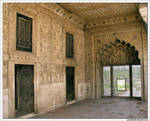
 :thumb124033904:
:thumb124033904:
Think about Gothic buildings all over Europe.


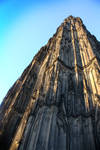

Think about Baroque and Rococo palaces and churches, and the rough, curved and extremely detailed surfaces and volumes of Gaudì's buildings at the beginning of the past century.
 :thumb158320135:
:thumb158320135:
Think about Le Corbusier's Modulor: human body and proportions (and thus Fibonacci Numbers and Golden Ratio) as base dimensions to plan the whole building and spaces.

And don't forget Organic Architecture - see Frank Lloyd Wright and all the modern studies regarding computerized generation of biological buildings which could completely emulate natural structures and life, breathing, growing and interacting with the environment like biological organisms.

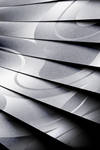



Many of the most famous and important architects of the present days still focus their compositions and expressive/functional research on similar geometric and dimensional criteria.



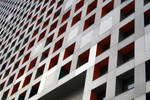


Here's a showcase of beautiful examples of Fractal Art and Architecture Photography: I mixed them together, sometimes it's not that easy to tell the difference




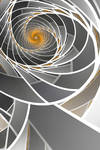


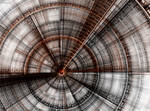
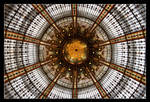
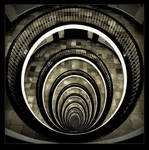




 :thumb201246840:
:thumb201246840:




BIBLIOGRAPHY AND SOURCES:
Some interesting websites about Fractal Architecture:
 Fractals and Fractal Architecture
Fractals and Fractal Architecture
 Fractals in the New Architecture - by Nikos A. Salingaros
Fractals in the New Architecture - by Nikos A. Salingaros
 Connecting the Fractal City - by Nikos A. Salingaros
Connecting the Fractal City - by Nikos A. Salingaros
 Biothing
Biothing
 Fractals in Architecture - University of Yale
Fractals in Architecture - University of Yale
 Fractal Architecture
Fractal Architecture
 Self-similarity, Fractals and Architecture
Self-similarity, Fractals and Architecture
 VANGUARQ - beyond architecture
VANGUARQ - beyond architecture
 (ITA) Daniele Capo, "La natura frattale degli ordini architettonici", Nexus Network Journal, vol. 6 no. 1 (Spring 2004)
(ITA) Daniele Capo, "La natura frattale degli ordini architettonici", Nexus Network Journal, vol. 6 no. 1 (Spring 2004)
 (ITA) I Frattali e l'Architettura
(ITA) I Frattali e l'Architettura
Some interesting books:
 Bovill, Carl "Fractal Geometry in Architecture and Design", 1995, A Birkhäuser book
Bovill, Carl "Fractal Geometry in Architecture and Design", 1995, A Birkhäuser book
 Christopher Alexander, Sara Ishikawa, Murray Silverstein "A Pattern Language", 1977, Oxford University Press
Christopher Alexander, Sara Ishikawa, Murray Silverstein "A Pattern Language", 1977, Oxford University Press
 Ron Eglash "African Fractals: Modern Computing and Indigenous Design", 1999, Rutgers University Press
Ron Eglash "African Fractals: Modern Computing and Indigenous Design", 1999, Rutgers University Press
 Nikos A. Salingaros "A Theory of Architecture", 2006, Umbau-Verlag, Solingen
Nikos A. Salingaros "A Theory of Architecture", 2006, Umbau-Verlag, Solingen
 "Nexus: Architecture and Mathematics" series, published by Kim Williams Books
"Nexus: Architecture and Mathematics" series, published by Kim Williams Books
For an architect, there's something utterly fascinating in geometry, especially in fractals: take the extra step and change the scale of your architectural perception, from a landscape vision to an urban one, from a building to a single room, from a façade to the surface of the raw material... and then turn and repeat your journey backwards. Try to focus on the symmetries and dimensional laws, on the textures and patterns, on the succession and arrangement of spaces and shapes. You can easily notice that there's often a natural and subtle order, and inconscious emulation of natural structures and laws, and nature quite always follows Fractal geometry rather than Euclidean.
That's probably why in Fractal images I can often see volumes and spaces, patterns and details, structures and buildings, cityscapes and citymaps, huge planetary settlements and tiny microscopic details of material textures.
Let's think about the growth of human settlements in the landscape. Cities and anthropized territories usually expand themselves following the same rules/patterns they're made of, with different scales. Ba-ila villages in southern Zambia (Africa) are clearly structured on a fractal design aziarts.com/air/Resource%20Pic… , and so are several other settlements all over the continent hans.wyrdweb.eu/wp-content/upl… www.designers421.org/wp-conten… .





Now just think about the traffic system in a city: it could remind you of the circulatory system in a human body. See how the "veins" become "capillaries", repeating the same structural pattern in a gradually narrowed scale from the center to the edges.
Fractal geometries have influenced and inspired builders, architects and artists throughout history: think about the precise proportions classic buildings were built with. Golden Ratio ruled not only the general dimensions of the various fronts, but also every single element even to the tiniest scale.
Think about Indian, Cambodian and south-eastern asian palaces and temples.


 :thumb124033904:
:thumb124033904:Think about Gothic buildings all over Europe.




Think about Baroque and Rococo palaces and churches, and the rough, curved and extremely detailed surfaces and volumes of Gaudì's buildings at the beginning of the past century.
 :thumb158320135:
:thumb158320135:Think about Le Corbusier's Modulor: human body and proportions (and thus Fibonacci Numbers and Golden Ratio) as base dimensions to plan the whole building and spaces.

And don't forget Organic Architecture - see Frank Lloyd Wright and all the modern studies regarding computerized generation of biological buildings which could completely emulate natural structures and life, breathing, growing and interacting with the environment like biological organisms.





Many of the most famous and important architects of the present days still focus their compositions and expressive/functional research on similar geometric and dimensional criteria.






Here's a showcase of beautiful examples of Fractal Art and Architecture Photography: I mixed them together, sometimes it's not that easy to tell the difference














 :thumb201246840:
:thumb201246840:




BIBLIOGRAPHY AND SOURCES:
Some interesting websites about Fractal Architecture:
Some interesting books:
2020 update
Hello everyone :wave:
Six years have passed since I last wrote a journal here, many many things happened to me in the meantime - both nice and... not really nice.
However, I wanted to share a little update about my various profiles on the other art websites, and I would love to know if any of you is present there as well!
First of all, I started uploading some images to my personal website - it's work in progress, there is still a lot to do and show!
https://www.chiarabiancheri.com/
I am keeping my profile at Behance:
https://www.behance.net/lindelokse
I revived my - almost forgotten - instagram account:
https://www.instagram.com/lindeloks
Ciao!!! + DD!
:wave: hello everyone!
Such a long time!!!
I'm on my first day of vacation and will finally relax a bit for two weeks before getting back to work. I will have some nice time in the mountains and then in Amsterdam :)
I'm still inactive here, but I always pay a quick visit from time to time :) so I did notice the wonderful surprise on my mother's birthday (august the 4th)!!! My heartfelt thank you to KPEKEP (https://www.deviantart.com/kpekep) for suggesting and to TimberClipse (https://www.deviantart.com/timberclipse) for featuring my "The Rite of the Fireflies" as a Daily Deviation!!! And a very big thank you to all the kind people who watched it, liked it, faved it and took the time to comment it, I really
Thank you very much!
:wave:
Thank you all so much for the birthday wishes, I really appreciated so much :aww:! You're always so kind and sweet!
Also, a huge thank you to tatasz (https://www.deviantart.com/tatasz) for featuring my Source of Mana flame as a Daily Deviation!
It was completely unexpected :wow:!!! A big thank you to all the kind people who faved it and to those who added me to their watchlist :thanks:!
I've been almost always offline from here lately so I'm very little active, but I always love it when I come to pay a visit here! Big hugs!
Anniversary News + Features!
:wave: hi there!!!
:bulletred: :excited: I've been SIX YEARS ON DEVIANTART + I reached 4000+ watchers :wow: :dance: :blush: :thanks:
thank you all so much for the wonderful time and all the support :heart: it means so much to me!!!
:bulletred: I will have a beautiful gallery at the new chaotica website showing some works I never published before ;) stay tuned for updates!
:bulletred: thanks a lot for the wonderful enthusiasm for my little animation in collaboration with skulkey (https://www.deviantart.com/skulkey) :thanks:!!! It received a lot of favorites but the most amazing thing is the overwhelming number of comments :wow:!!! Thank you, thank you all very much, I'm s
© 2011 - 2024 lindelokse
Comments62
Join the community to add your comment. Already a deviant? Log In
As I had mentioned earlier Marina City (the twin towers in organic architecture far left) was not designed by Frank Lloyd Wright, but by Bertrand Goldberg